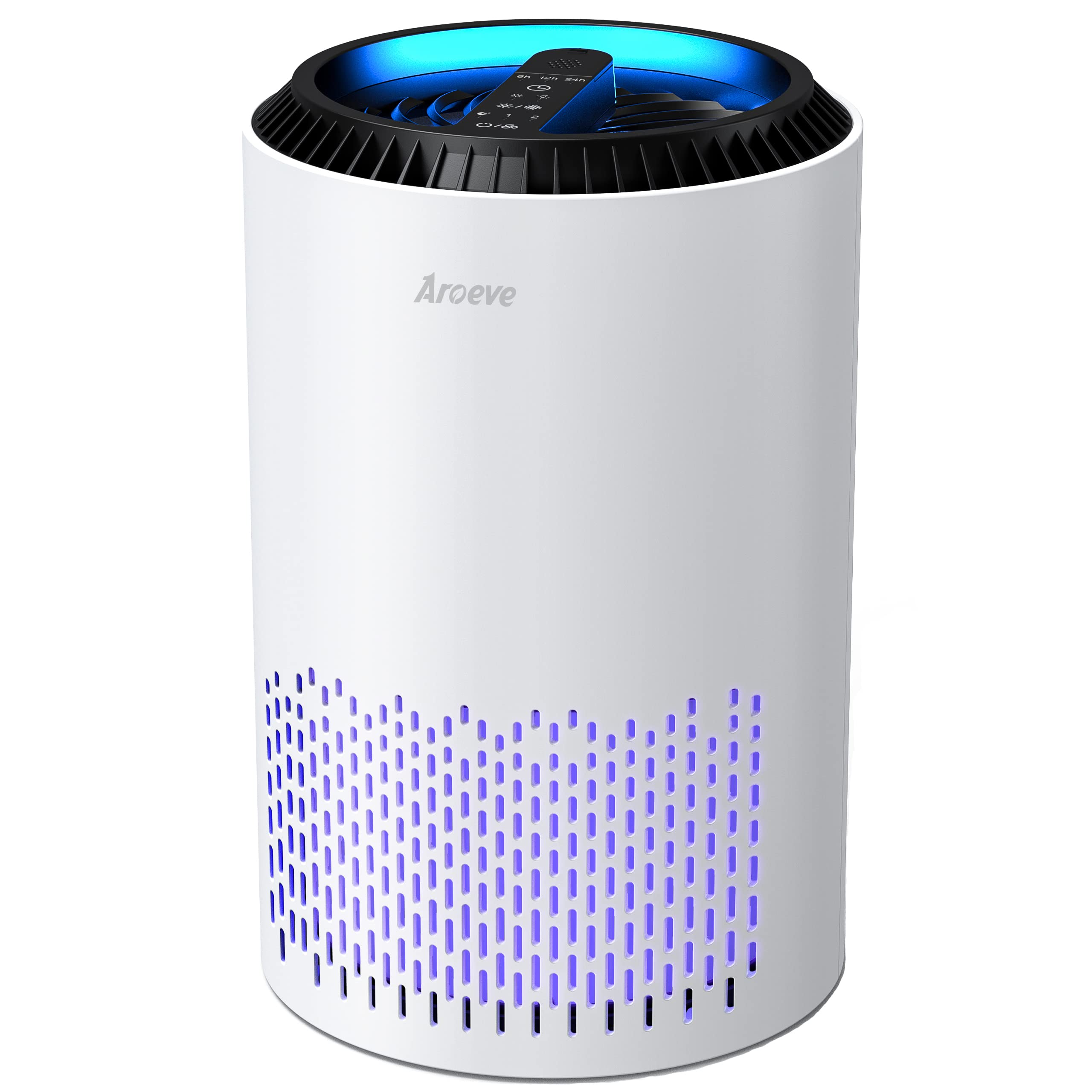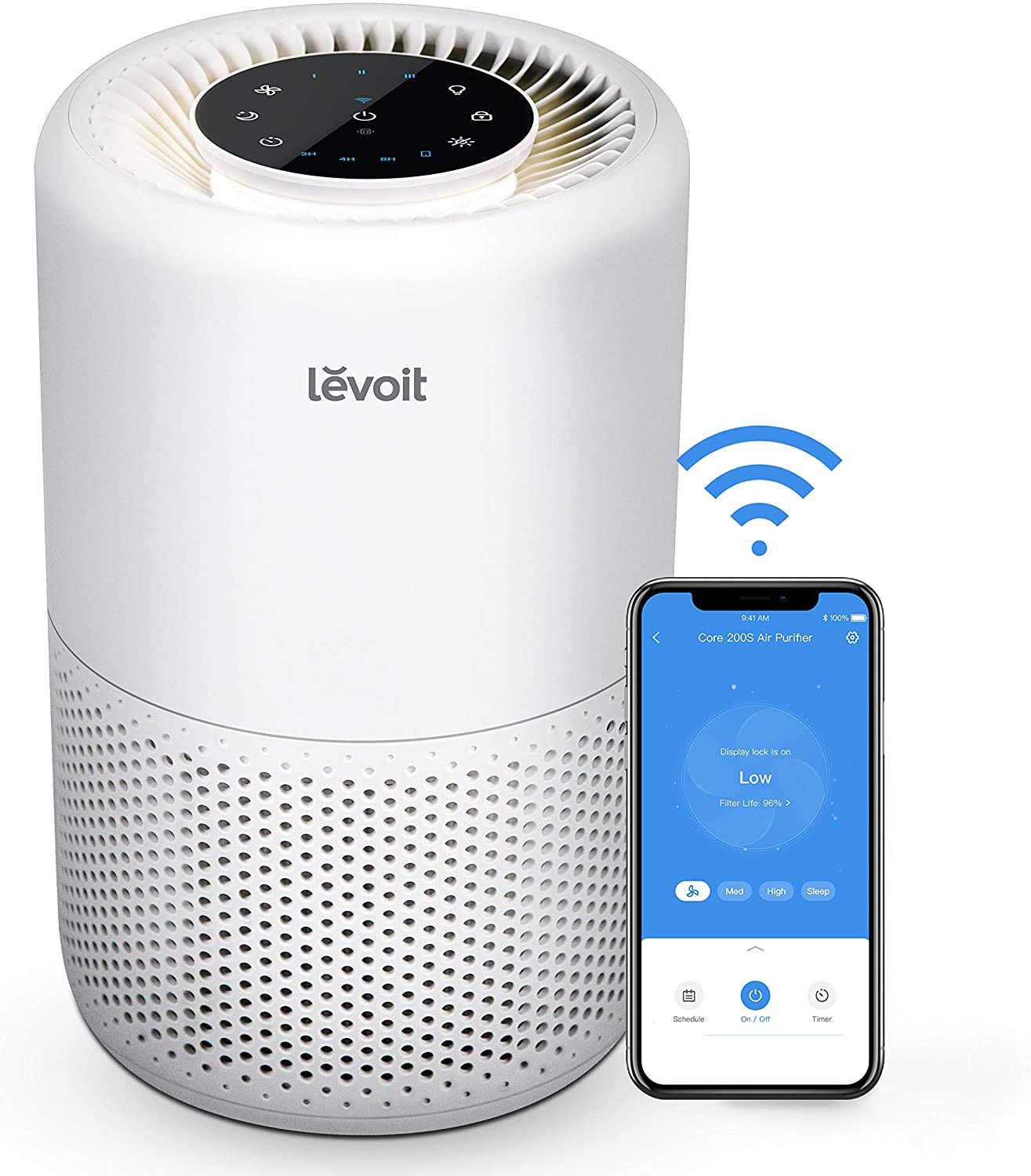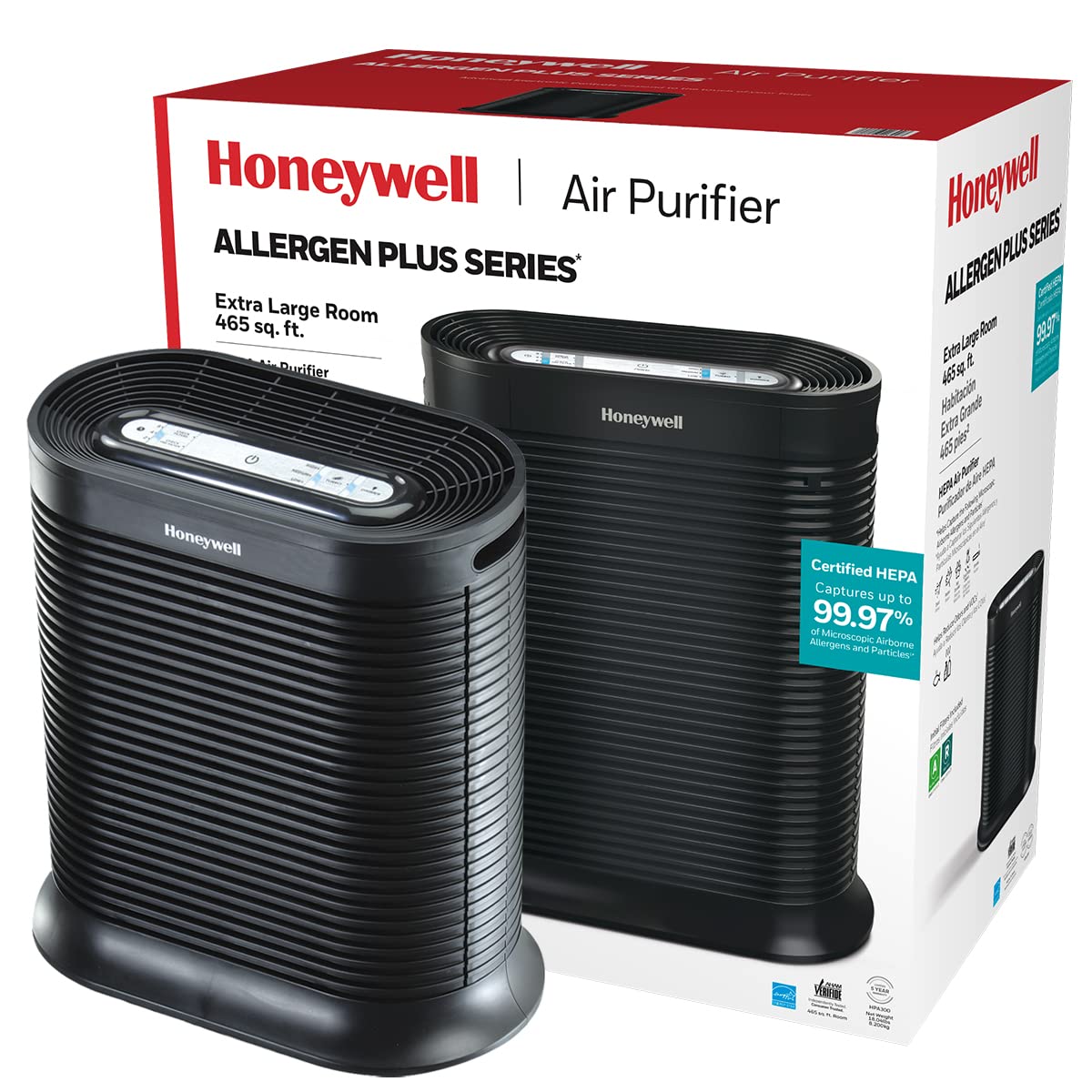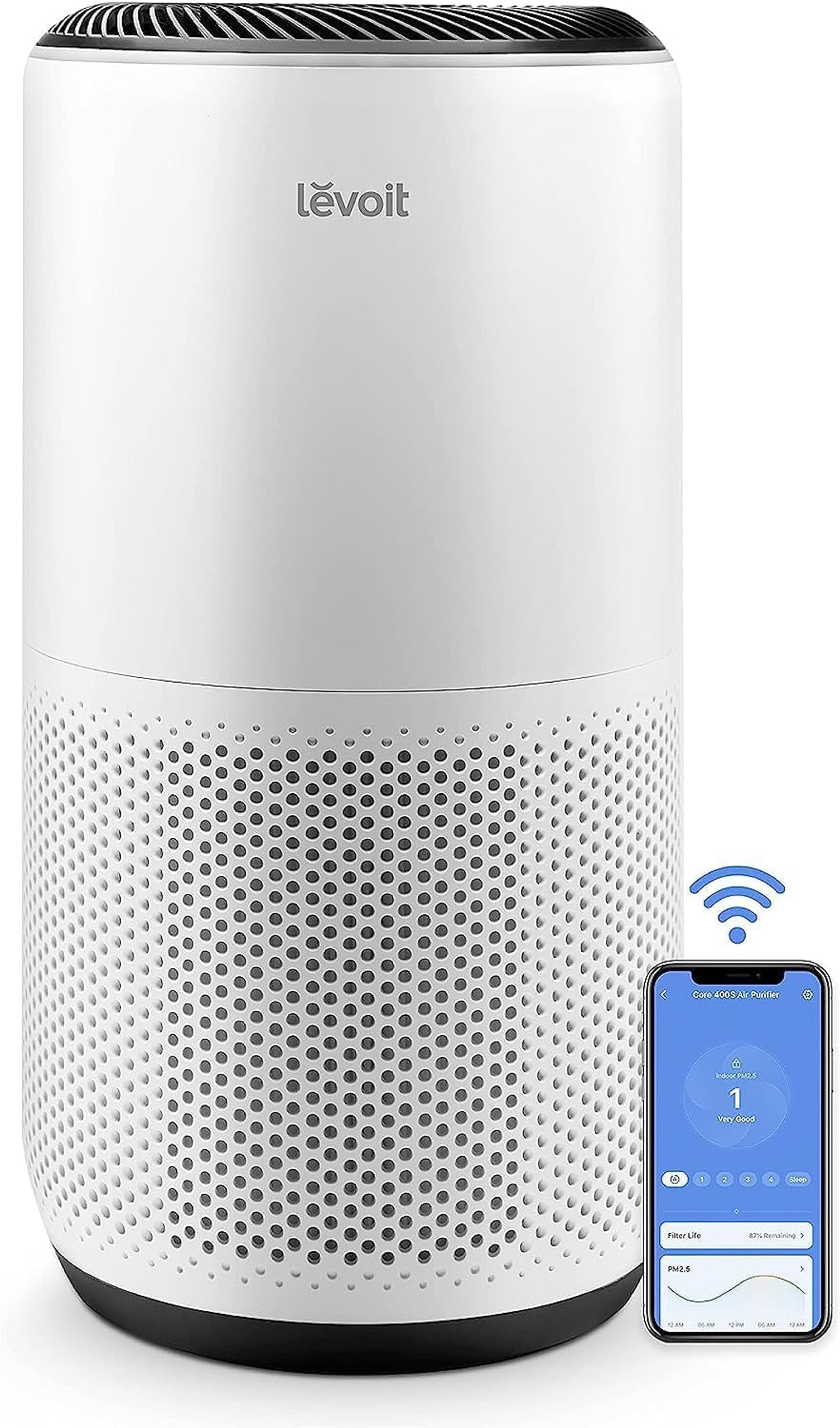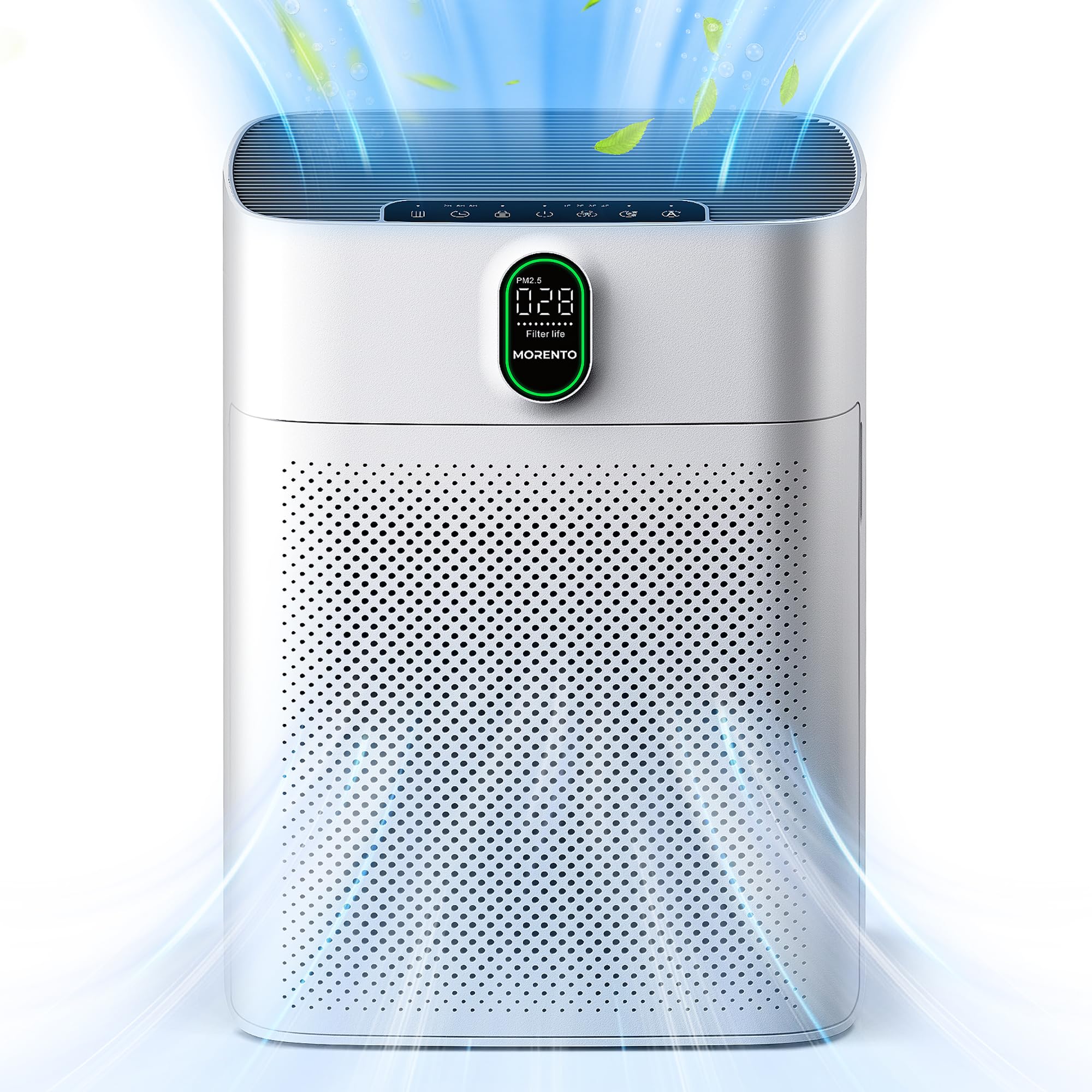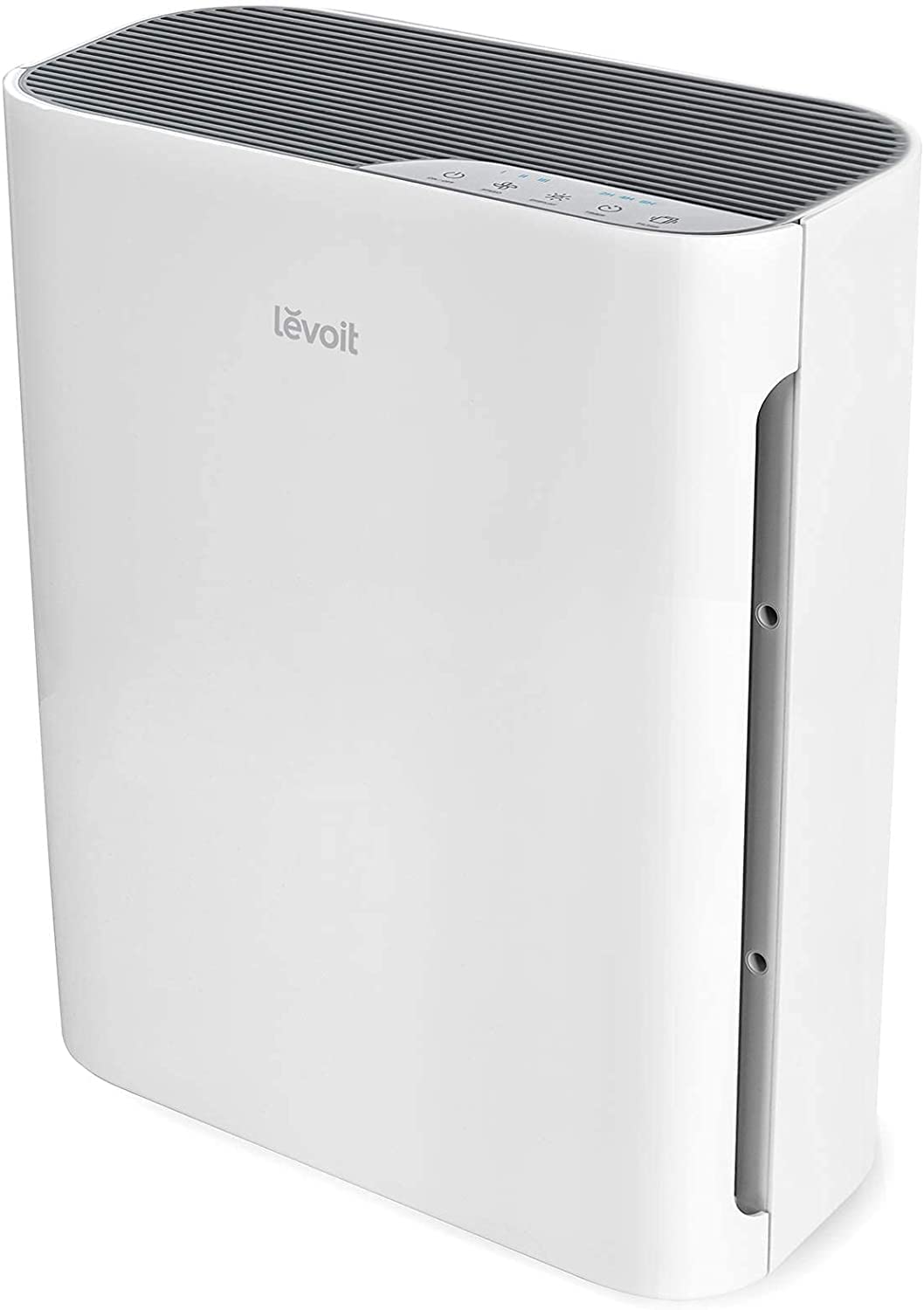FAQs - Advanced Queries
How to Clean Levoit Air Purifier Filter
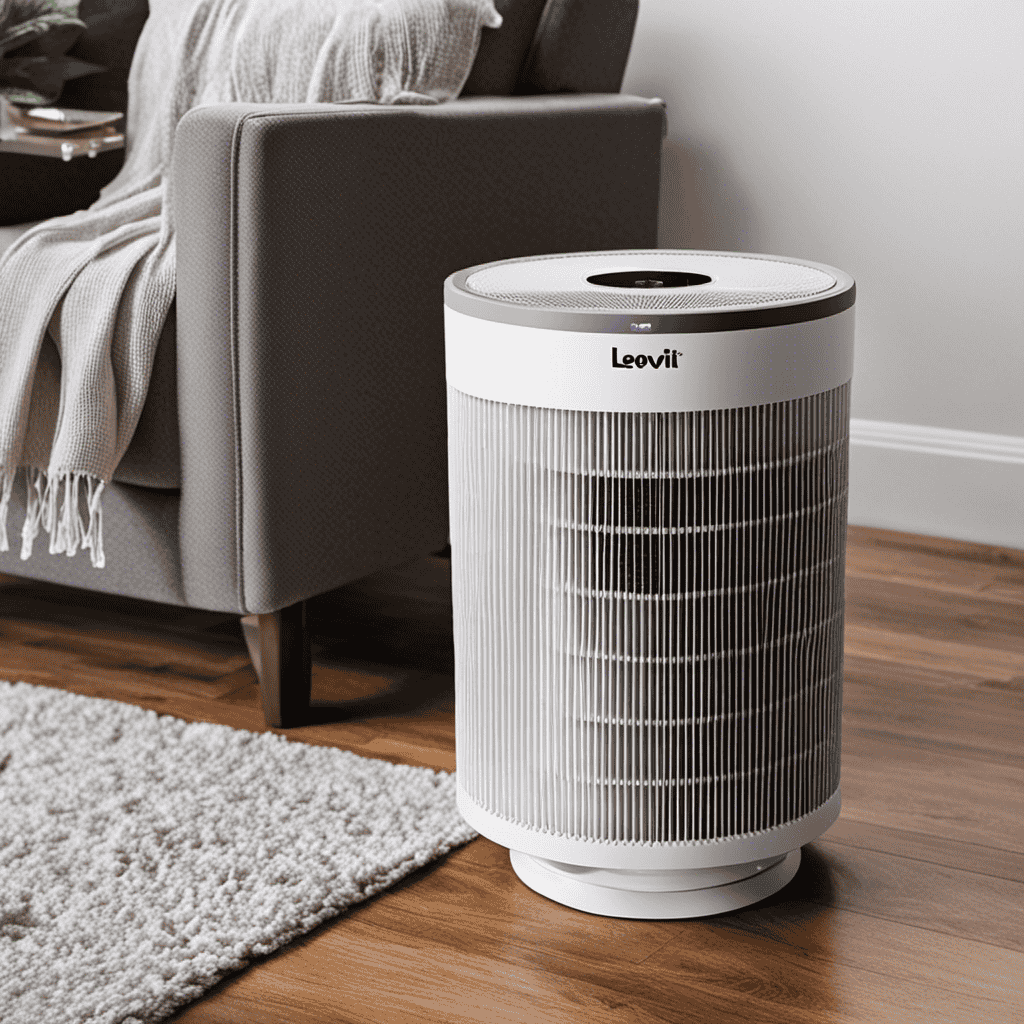
As a proud owner of a Levoit Air Purifier, I can confirm the significance of regularly cleaning the filter.
With everyday use, dust, allergens, and pollutants can accumulate, compromising the efficiency of the purifier.
That’s why I’ve put together this detailed guide on how to properly clean your Levoit Air Purifier Filter.
From the tools and supplies needed to the step-by-step process, I’ll walk you through everything you need to know to maintain the optimal performance of your air purifier.
So, let’s get started and breathe cleaner air together!
Key Takeaways
- Cleaning the Levoit Air Purifier filter is important for maintaining efficiency and effectiveness of the device, ensuring clean and fresh air, and preventing the filter from becoming clogged.
- The cleaning frequency of the filter depends on air quality and usage of the purifier, but it is generally recommended to clean the filter once every three to six months.
- Safety measures should be taken when cleaning the filter, such as switching off and unplugging the air purifier, using gloves, and cleaning in a well-ventilated area.
- Proper handling and maintenance of the filter include tapping or brushing off loose debris, using a soft brush or vacuum cleaner, ensuring the filter is dry before reinserting, and following the manufacturer’s instructions.
Why Cleaning Your Levoit Air Purifier Filter Is Important
Cleaning your Levoit air purifier filter is important because it helps to maintain the efficiency and effectiveness of the device.
Filter maintenance is crucial to ensure that your air purifier continues to function properly and provide you with clean and fresh air.
Over time, the filter accumulates dust, allergens, and other airborne particles, reducing its ability to effectively clean the air. By regularly cleaning the filter, you can improve the air quality in your home or office and prevent the filter from becoming clogged.
This will not only help the air purifier to work more efficiently but also extend the lifespan of the filter itself.
Now that we understand the importance of filter maintenance, let’s move on to the tools and supplies needed for cleaning.
Tools and Supplies Needed for Cleaning
You’ll need a few tools and supplies to properly maintain your Levoit air purifier’s filter. Here are the essential items you’ll need for the cleaning process:
-
Tools:
-
Screwdriver: Used to remove the cover of the air purifier.
-
Soft brush: Helps to remove dust and debris from the filter.
-
Supplies:
-
Water: Used for rinsing the filter.
-
Mild detergent: Helps to remove stubborn stains or odors from the filter.
-
Clean cloth: Used to wipe the filter dry after cleaning.
Having these tools and supplies ready will make the cleaning process more efficient and effective.
It is important to clean your Levoit air purifier’s filter regularly to ensure optimal performance and prolong its lifespan. By following the recommended cleaning process and using the right tools and supplies, you can maintain a clean and healthy environment in your home.
Step-by-Step Guide to Cleaning the Levoit Air Purifier Filter
To effectively maintain your Levoit air purifier’s filter, it’s essential to have the right tools and supplies on hand. Proper maintenance and cleaning techniques are necessary to ensure the longevity and efficiency of your air purifier.
Start by turning off and unplugging the unit before attempting to clean the filter. Gently remove the filter from the purifier, following the manufacturer’s instructions. Check the filter for any visible dirt or debris and use a soft brush or vacuum cleaner to remove them.
If the filter is washable, rinse it under running water until clean and then allow it to dry completely before reinstalling. If the filter is not washable, replace it with a new one.
Regular cleaning of the filter will help maintain the air purifier’s performance and extend its lifespan.
Now, let’s discuss how often you should clean the filter.
How Often Should You Clean the Filter
When it comes to maintaining your air purifier, it’s important to know how frequently the filter should be cleaned. The cleaning frequency of your Levoit air purifier filter depends on various factors, such as the air quality in your area and the usage of the purifier. However, as a general rule of thumb, it is recommended to clean the filter at least once every three to six months.
Here are a few things to consider when determining the cleaning frequency of your Levoit air purifier filter:
-
Air Quality: If you live in an area with high pollution levels or have pets, you may need to clean the filter more frequently. Pollen seasons and construction nearby can also increase the need for more regular cleaning.
-
Usage: If you use your air purifier for extended periods or run it on higher fan speeds, the filter may accumulate more particles and require more frequent cleaning.
Signs That Your Levoit Air Purifier Filter Needs Cleaning
In this discussion, I’ll be addressing two key points related to the maintenance of your Levoit air purifier:
-
Filter replacement frequency: It’s important to understand how often you should replace the filter in order to maintain optimal performance and air quality.
-
Visible dust accumulation: Being able to identify visible dust accumulation on the filter can serve as a visual cue that it may be time for a replacement.
These two points are crucial for ensuring that your Levoit air purifier functions effectively and provides clean air for your space.
Filter Replacement Frequency
You should regularly check the filter replacement frequency for your Levoit air purifier. Maintaining a proper filter replacement schedule is crucial for ensuring optimal performance and prolonging the lifespan of your air purifier. Here are a few key points to consider:
-
Regular filter replacement schedule:
-
Check the user manual or manufacturer’s instructions for the recommended filter replacement frequency.
-
Set reminders or create a schedule to ensure timely replacements.
-
Benefits of regular filter cleaning:
-
Improved air quality: Regularly cleaning or replacing the filters helps remove pollutants, allergens, and odors, ensuring clean and fresh air.
-
Enhanced efficiency: Clean filters allow the air purifier to function optimally, ensuring maximum purification and airflow.
Neglecting filter replacement can result in reduced performance, increased energy consumption, and a compromised air quality. So, make sure to prioritize regular filter maintenance for your Levoit air purifier.
Visible Dust Accumulation
To ensure optimal performance and air quality, it’s important to regularly address visible dust accumulation in your Levoit air purifier. Dust buildup on the filter can hinder its effectiveness and reduce the purifier’s efficiency.
Thankfully, there are alternative cleaning methods you can employ to maximize filter performance. First, turn off and unplug the unit. Remove the filter and gently tap it to dislodge loose dust. You can also use a soft brush or vacuum cleaner with a brush attachment to remove stubborn particles.
Avoid using water or cleaning agents on the filter, as this can damage its delicate fibers. Once cleaned, reinstall the filter and restart the purifier.
Regularly addressing visible dust accumulation will ensure your Levoit air purifier continues to provide clean and fresh air.
Precautions to Take Before Cleaning the Filter
Before cleaning the filter of my Levoit air purifier, it is crucial to take certain safety measures to ensure a successful and risk-free cleaning process.
Firstly, I need to make sure that the air purifier is turned off and unplugged from the power source to avoid any electrical accidents.
Secondly, I should wear protective gloves and a face mask to protect myself from inhaling any dust or allergens that may be present in the filter.
Lastly, I must handle the filter with care, avoiding any rough handling or excessive bending that could damage the filter’s delicate components.
Safety Measures for Cleaning
When cleaning the Levoit air purifier filter, it’s important to follow safety measures to ensure your well-being. Here are some safe cleaning practices and potential hazards to be aware of:
- Ensure the air purifier is switched off and unplugged before starting the cleaning process.
- Use gloves to protect your hands from any potential allergens or contaminants present on the filter.
- Avoid touching the inner parts of the filter to prevent damage or exposure to harmful particles.
- Clean the filter in a well-ventilated area to minimize inhalation of dust or pollutants.
- Be cautious when cleaning the electronic components of the air purifier to prevent any electrical shocks.
By following these safety measures, you can effectively clean your Levoit air purifier filter without putting yourself at risk.
Now, let’s move on to the next section where we will discuss proper filter handling techniques.
Proper Filter Handling
Now that we have discussed safety measures for cleaning the Levoit air purifier filter, let’s move on to proper filter handling and some maintenance tips.
When it comes to filter cleaning, it is essential to follow the manufacturer’s instructions carefully. Start by turning off the purifier and unplugging it from the power source before removing the filter. Gently tap the filter to remove any loose dust or debris.
To clean the filter, use a soft brush or vacuum cleaner with a brush attachment. Avoid using water or liquid cleaners, as they can damage the filter. Once the filter is clean, make sure it is completely dry before reinserting it into the purifier.
Regular maintenance, such as cleaning the filter every few months, will ensure optimal performance and prolong the lifespan of your Levoit air purifier.
Removing the Filter From Your Levoit Air Purifier
To remove the filter from your Levoit Air Purifier, gently pull out the front cover. Follow these steps for proper filter cleaning and maintenance tips:
- Locate the front cover of your Levoit Air Purifier, usually at the top or front of the unit.
- Use your thumb and index finger to grip the edges of the front cover and gently pull it towards you.
- After removing the front cover, you will see the filter inside. Avoid touching the filter with dirty hands.
- Clean the filter by using a soft brush or vacuum cleaner to remove dust or debris.
- Thoroughly clean both sides of the filter.
- After cleaning, place the filter back into the air purifier and securely attach the front cover.
- Now, move on to cleaning the pre-filter.
With the filter removed, we can now proceed to cleaning the pre-filter.
Cleaning the Pre-filter
In this discussion, I’ll cover the essential aspects of maintaining the lifespan of your air purifier filter.
We will explore proper cleaning techniques to ensure optimum performance and longevity.
Additionally, we’ll delve into the frequency of maintenance required to keep your filter in optimal condition.
Maintaining Filter Lifespan
To maintain the lifespan of your Levoit air purifier filter, you’ll want to regularly clean it and replace it when necessary. The efficiency of your filter plays a crucial role in ensuring clean and healthy air in your home. Here are some tips to help you maintain filter efficiency and extend its lifespan:
-
Cleaning:
-
Vacuum the exterior of the filter to remove any visible dust or debris.
-
Use a soft brush or cloth to gently clean the surface of the filter.
-
Rinse the filter under running water to remove finer particles.
-
Allow the filter to air dry completely before reinstalling.
-
Replacing:
-
Check the manufacturer’s recommendations for the recommended replacement interval.
-
Monitor the filter’s performance and replace it if you notice a significant decrease in air purification efficiency.
-
Always use genuine Levoit replacement filters to ensure optimal performance.
Proper Cleaning Techniques
Regularly cleaning and replacing your filter is essential for maintaining optimal performance and prolonging its lifespan. Proper filter maintenance involves a few key cleaning techniques.
First, make sure to turn off and unplug the air purifier before removing the filter. Gently tap the filter to remove any loose debris or dust. Next, use a soft brush or vacuum with a brush attachment to remove any remaining dirt or particles. If the filter is washable, carefully rinse it under running water until the water runs clear. Allow the filter to dry completely before reinstalling it. For non-washable filters, replace them according to the manufacturer’s recommendations.
By following these cleaning techniques, you can ensure that your air purifier operates at its best.
Now, let’s move on to discussing the frequency of maintenance.
Frequency of Maintenance
Maintaining optimal performance and prolonging the lifespan of your air purifier requires regularly cleaning and replacing the filter. How often you need to perform these maintenance tasks will depend on several factors.
Factors affecting filter replacement frequency:
-
Air quality: If you live in an area with high pollution levels or have pets, you may need to replace the filter more frequently.
-
Usage: If you use the air purifier for extended periods or at maximum speed, the filter will get clogged faster.
Factors affecting filter maintenance frequency:
-
Filter type: Different air purifiers have different filter types, such as HEPA or activated carbon. Each type requires different maintenance schedules.
-
Manufacturer guidelines: Follow the recommendations provided by the air purifier manufacturer for specific maintenance intervals.
By understanding these factors and following the guidelines, you can ensure that your air purifier operates at its best.
Now let’s move on to the next section about cleaning the true HEPA filter.
Cleaning the True HEPA Filter
When cleaning the True HEPA filter, it’s important to follow the manufacturer’s instructions.
The cleaning technique for maintaining the filter is simple yet crucial for optimal air purification.
Start by turning off the air purifier and unplugging it from the power source.
Carefully remove the filter from the unit, taking note of its orientation.
Gently tap the filter to remove any loose particles, ensuring not to damage the delicate filter material.
Next, use a soft brush or vacuum cleaner with a brush attachment to remove stubborn dust and debris.
If the filter is heavily soiled, it may be necessary to wash it with water. However, always refer to the manufacturer’s instructions before doing so, as some filters are not washable.
Once cleaned, allow the filter to dry completely before reinstalling it into the air purifier.
Following these steps will help maintain the efficiency and longevity of the True HEPA filter.
Cleaning the Activated Carbon Filter
When it comes to cleaning the activated carbon filter in your air purifier, it’s important to follow proper cleaning techniques to ensure optimal performance.
The activated carbon filter is designed to remove odors and chemicals from the air, so it’s crucial to clean it effectively.
Understanding the frequency of maintenance for the activated carbon filter will help maintain the air purifier’s efficiency and prolong its lifespan.
Proper Cleaning Techniques
To properly clean the Levoit air purifier filter, you’ll need to follow these techniques:
- Remove the filter from the purifier and gently tap it to remove loose debris.
- Use a soft brush or vacuum attachment to remove any remaining dust or particles.
- Be careful not to damage the filter during this process.
- Avoid using water or liquid cleaners, as they can damage the filter.
- For alternative cleaning methods, consider using compressed air or a hairdryer on a cool setting to blow away trapped dirt.
By regularly cleaning your filter, you can maximize its lifespan and ensure optimal performance.
Proper cleaning techniques are essential for maintaining the efficiency and longevity of your Levoit air purifier filter. However, cleaning alone is not enough. It’s also crucial to understand the frequency of maintenance required to keep your filter functioning effectively.
Frequency of Maintenance
Regularly cleaning and maintaining your air purifier filter is essential for ensuring its efficiency and longevity. To maximize the filter lifespan, it is important to know how often it should be cleaned.
In general, it is recommended to clean the filter every three to six months, depending on the air quality in your environment. However, if you live in a polluted area or have pets, you may need to clean it more frequently.
Alternative cleaning methods can also be used to keep your filter in optimal condition. Some options include vacuuming the filter to remove larger particles or using compressed air to blow out the trapped dirt and dust.
Remember to always consult the manufacturer’s instructions for specific cleaning recommendations.
Drying and Reassembling the Filter
After rinsing the Levoit air purifier filter, make sure it is completely dry before reassembling it. Proper drying techniques are crucial to ensure the filter functions effectively. Here are some steps to follow:
-
Remove excess water: Gently shake the filter to remove any excess water. Do not wring or twist the filter as it may damage the delicate fibers.
-
Air drying: Place the filter in a well-ventilated area and allow it to air dry completely. Avoid direct sunlight or high heat sources, as they may cause damage.
-
Patience is key: Depending on the humidity levels, it may take up to 24 hours for the filter to dry completely. Be patient and ensure it is dry before proceeding.
-
Filter reassembly: Once the filter is completely dry, carefully reinstall it back into the air purifier. Make sure it is properly aligned and securely locked in place.
Following these drying techniques and ensuring proper filter reassembly will help maintain the performance and longevity of your Levoit air purifier.
Cleaning the Exterior of Your Levoit Air Purifier
When wiping down the outside of your Levoit air purifier, be sure to use a soft cloth to avoid scratching the surface. The exterior maintenance of your air purifier is just as important as cleaning the filters.
To keep your Levoit air purifier looking clean and functioning properly, there are a few cleaning techniques you should follow. Start by unplugging the device and removing the filters. Use a damp cloth or sponge with mild detergent to gently wipe the exterior surfaces. Avoid using abrasive cleaners or scrub brushes, as they can damage the finish. Pay close attention to the air vents and any crevices where dust and debris may accumulate.
Once you have cleaned the exterior, make sure to dry it thoroughly before reassembling the filters and plugging it back in. Regular exterior maintenance will not only keep your Levoit air purifier looking its best, but also ensure optimal performance.
Alternative Methods for Cleaning the Filter
To maintain optimal performance, you can try using alternative methods to clean the filter of your Levoit air purifier. Deep cleaning the filter is essential to ensure it continues to effectively remove pollutants from the air.
Here are two alternative methods you can try:
-
Vacuuming: Use a vacuum cleaner with a brush attachment to gently remove dust and debris from the surface of the filter. Be careful not to damage or dislodge any filter materials.
-
Washing: Some Levoit air purifier filters are washable. Follow the manufacturer’s instructions to remove the filter and wash it with mild detergent and water. Allow it to dry completely before reinstalling.
Tips for Maintaining the Efficiency of Your Levoit Air Purifier Filter
One way to ensure your Levoit air purifier filter stays efficient is by regularly maintaining it. Proper filter maintenance is crucial for improving air quality and ensuring the longevity of your air purifier.
To maintain the efficiency of your Levoit air purifier filter, start by checking the manufacturer’s instructions for specific cleaning guidelines. Most Levoit filters are washable, so you can remove the filter and gently clean it with water or a mild detergent. Be sure to let the filter dry completely before reinstalling it.
Additionally, it’s important to regularly vacuum the exterior of the air purifier to remove any dust or debris that may accumulate.
Troubleshooting Common Issues With the Filter Cleaning Process
If you’re experiencing difficulties while cleaning the filter, try referring to the troubleshooting guide for helpful tips. Troubleshooting techniques can help you identify and resolve common mistakes that may occur during the filter cleaning process.
Here are some common issues you may encounter:
-
Incorrect filter installation
-
Ensure that the filter is properly aligned and securely placed in the air purifier.
-
Check for any signs of damage or wear that may affect the filter’s performance.
-
Clogged filter
-
If you notice reduced airflow or odors coming from your air purifier, it may be due to a clogged filter.
-
Remove the filter and gently tap it to remove any trapped particles. If necessary, wash the filter with lukewarm water and let it dry completely before reinstalling.
Frequently Asked Questions
Can I Clean the Levoit Air Purifier Filter With Water and Soap?
Yes, you can clean the Levoit air purifier filter with water and soap. However, there are alternative cleaning methods for Levoit air purifier filters that do not involve water and soap.
How Long Does It Take for the Levoit Air Purifier Filter to Dry Completely?
To speed up drying time of the Levoit air purifier filter, it’s best to remove excess moisture by gently patting it with a dry cloth. Maintaining the filter regularly by cleaning it every 3-6 months will also help prolong its lifespan.
Is It Necessary to Clean the Exterior of the Levoit Air Purifier Regularly?
Yes, it is necessary to clean the exterior of the Levoit air purifier regularly to maintain its performance. However, it is not safe to clean the filter with chemicals. Cleaning frequency depends on usage and environment.
Can I Use a Vacuum Cleaner to Clean the Levoit Air Purifier Filter?
Yes, you can use a vacuum cleaner to clean the Levoit air purifier filter. It’s efficient in removing dust and debris. For a deeper clean, try using a mixture of vinegar and baking soda.
What Should I Do if I Accidentally Damage the True HEPA Filter While Cleaning It?
If I accidentally damage the True HEPA filter while cleaning it, I need to replace it. It is essential to handle the filter with care and follow the manufacturer’s instructions to ensure optimal performance of the air purifier.
Are the Steps to Clean a Homedics Air Purifier Filter Similar to Cleaning a Levoit Air Purifier Filter?
Yes, the steps to clean a Homedics air purifier filter are similar to cleaning a Levoit air purifier filter. Both require gently tapping and vacuuming the filter to remove dust and debris, and may also need to be washed with water and left to air dry before reinstallation.
Conclusion
In conclusion, cleaning your Levoit Air Purifier filter is crucial for maintaining its efficiency and ensuring clean air in your home.
According to a recent study, it was found that a dirty air filter can reduce the airflow by up to 50%, leading to poor air quality and potential health risks.
By following the step-by-step guide and using the right tools and supplies, you can easily clean your filter and improve the performance of your air purifier.
Remember to clean the filter regularly and keep an eye out for signs that indicate it needs cleaning.
By taking proper care of your Levoit Air Purifier filter, you can enjoy fresh and clean air in your home for years to come.
In the dynamic world of air purifiers and clean air advocacy, Aire stands out as a beacon of knowledge and passion. As the Editor in Chief of Aero Guardians, Aire has been instrumental in shaping the platform’s voice and direction, ensuring that every piece of content resonates with clarity, authority, and authenticity.
FAQs - Advanced Queries
Why Should I Leave the Room When Air Purifier Iso N
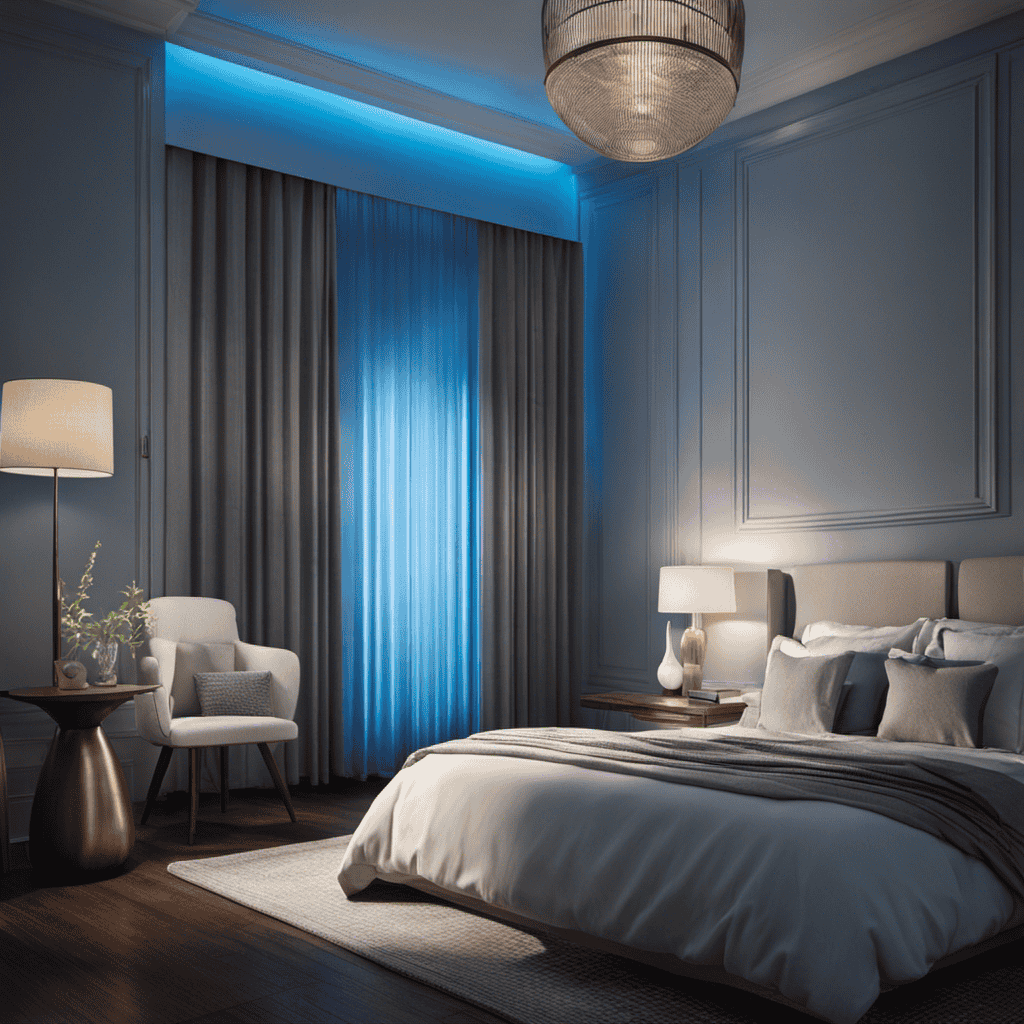
I cannot emphasize how crucial it is to leave the room while using an air purifier with ozone in it. The risks of staying in the room are serious and should not be ignored. If you care about your health, it’s best to stay away from the room when the purifier is on. Trust me, your well-being is worth it.
In this article, we will delve into the understanding of air purifier iso N, the benefits of creating a safe environment, and how to maximize its effectiveness. By following these guidelines, we can ensure the health and well-being of all occupants.
So let’s dive in and discover why stepping out of the room is crucial in this scenario.
Key Takeaways
- Leaving the room when using an air purifier is crucial for avoiding exposure to harmful particles.
- Air purifiers can release byproducts like ozone or small amounts of carbon dioxide.
- Inhaling byproducts can be harmful to health.
- Lack of ventilation in a closed room can lead to the accumulation of indoor pollutants.
The Importance of Leaving the Room
You should definitely leave the room when the air purifier is on. This is crucial for avoiding exposure to harmful particles and ensuring clean air in your environment.
Air purifiers work by filtering out pollutants, such as dust, pollen, pet dander, and even harmful gases like volatile organic compounds (VOCs). However, during this process, the air purifier can release some byproducts, such as ozone or small amounts of carbon dioxide.
While these levels are generally safe, it is still advisable to leave the room to minimize any potential risks. By doing so, you can ensure that you are not inhaling any byproducts and that the air purifier can effectively clean the air without hindrance.
Understanding air purifier ISO n will further enhance your knowledge on this topic.
Understanding Air Purifier Iso N
Understanding how air purifiers can affect the air quality in a room is important. Air purification techniques play a crucial role in maintaining clean and healthy indoor environments.
These techniques involve the use of air purifiers, which help to remove contaminants such as dust, allergens, and pollutants from the air. By trapping these particles, air purifiers can significantly improve air quality and reduce the risk of respiratory issues.
Air pollution control measures are essential to create a safe living space, especially in areas with high levels of pollution. Air purifiers with iso n technology are particularly effective as they neutralize harmful substances in the air, including viruses and bacteria.
Potential Risks of Staying in the Room
Staying in a room for extended periods can increase the risk of exposure to harmful airborne particles. It’s important to understand the potential risks associated with staying in a room for too long, especially when using an air purifier. Here are some key points to consider:
-
Lack of ventilation: When staying in a closed room for a long time, the lack of fresh air circulation can lead to the accumulation of indoor pollutants.
-
Inadequate filtration: Not all air purifiers are created equal. Some may not effectively capture smaller particles or certain types of pollutants, leaving them in the air.
-
Contaminant re-release: Air purifiers can inadvertently release trapped pollutants back into the room, especially if the filter is not regularly cleaned or replaced.
-
Mold and bacteria growth: Staying in a humid room with poor air circulation can create an environment conducive to the growth of mold and bacteria, which can pose health risks.
To minimize these risks, it’s recommended to regularly open windows for fresh air exchange, maintain proper air purifier maintenance, and ensure adequate ventilation in the room.
Benefits of Creating a Safe Environment
Creating a safe environment can help promote overall well-being and reduce the risk of exposure to potential hazards. By implementing healthy habits and taking precautions, we can significantly reduce respiratory problems and improve our quality of life. Here is a table that highlights the benefits of creating a safe environment:
| Benefits of Creating a Safe Environment |
|---|
| Reduces respiratory problems |
| Enhances overall well-being |
| Minimizes exposure to hazards |
Maximizing the Effectiveness of Air Purifier Iso N
Maximizing the effectiveness of an air purifier is essential for improving indoor air quality and reducing respiratory issues. To achieve this, here are some key strategies:
- Regularly clean and replace air filters to ensure optimal performance.
- Place the air purifier in a central location to improve air circulation throughout the room.
- Use the air purifier on high settings during times when airborne pollutants are most prevalent, such as during cooking or cleaning.
- Consider using additional methods, such as opening windows or using fans, to further enhance air circulation and filtration.
By implementing these practices, you can significantly improve the efficiency of your air purifier in reducing airborne pollutants and promoting healthier indoor air quality.
This is crucial for ensuring the health and well-being of occupants, as clean air is vital for respiratory health and overall wellness.
Ensuring the Health and Well-being of Occupants
When it comes to ensuring the health and well-being of occupants, air purifiers play a crucial role.
These devices offer a range of benefits that contribute to improving indoor air quality.
Air Purifier Benefits
Using an air purifier can greatly improve the air quality in your room. Air purifier technology has advanced significantly in recent years, offering various air purification techniques to effectively remove harmful pollutants from the air.
Here are some key benefits of using an air purifier:
-
Reduces allergens: Air purifiers can capture and eliminate common allergens like dust mites, pet dander, and pollen, providing relief for allergy sufferers.
-
Eliminates odors: Whether it’s cooking smells, pet odors, or lingering smoke, air purifiers can help eliminate unpleasant odors, leaving your room smelling fresh and clean.
-
Removes airborne pollutants: Air purifiers can effectively capture and remove airborne pollutants such as bacteria, viruses, mold spores, and volatile organic compounds (VOCs), improving the overall air quality.
-
Enhances respiratory health: By reducing the presence of allergens and pollutants, air purifiers can improve respiratory health, reducing symptoms like coughing, sneezing, and wheezing.
Investing in an air purifier is a smart choice to create a healthier environment in your room, ensuring clean and fresh air for you to breathe.
Indoor Air Quality
Now that we understand the benefits of using an air purifier, let’s delve into the importance of indoor air quality.
Improving ventilation is crucial to maintaining a healthy indoor environment. When we think about air pollutants, we often envision outdoor pollutants like smog and pollen. However, it’s important to recognize that common indoor pollutants can also have a significant impact on our health. These pollutants include dust, pet dander, mold spores, and volatile organic compounds (VOCs) emitted from cleaning products and furniture.
Without proper ventilation, these pollutants can accumulate indoors, leading to respiratory issues, allergies, and other health problems. Therefore, it is essential to improve ventilation in our homes by opening windows, using exhaust fans, and ensuring proper air circulation.
Frequently Asked Questions
What Are the Specific Benefits of Leaving the Room When Using an Air Purifier With Iso N?
Leaving the room when using an air purifier with iso n provides several benefits. It helps reduce exposure to pollutants, improves indoor air quality, and minimizes potential health risks associated with staying in a contaminated environment.
Can Staying in the Room While the Air Purifier Is Running Have Any Negative Effects on My Health?
Staying in the room while the air purifier is running can pose potential health risks. It’s important to leave the room to minimize exposure to any harmful particles. Alternatively, you can use the purifier in unoccupied areas.
How Long Should I Leave the Room for When the Air Purifier With Iso N Is On?
I typically leave the room for about 30 minutes when using the air purifier with Iso N. During that time, I find alternative activities like reading or taking a walk to pass the time.
Are There Any Specific Risks or Dangers Associated With Staying in the Room While the Air Purifier Is in Use?
There are risks and dangers associated with staying in the room while the air purifier is on. It can cause health effects if the air quality is poor. To maximize efficacy, it is recommended to leave the room.
Are There Any Specific Steps I Can Take to Maximize the Effectiveness of the Air Purifier With Iso N, Even if I Choose to Stay in the Room?
To maximize the effectiveness of the air purifier with iso N, I can take a few steps. First, ensure proper placement of the purifier for optimal airflow. Second, regularly clean or replace filters for long-term efficiency.
Conclusion
In conclusion, it’s essential to leave the room when using an air purifier to maximize its effectiveness and ensure the health and well-being of occupants.
Studies have shown that air purifiers can remove up to 99.97% of airborne particles, including allergens, dust, and pollutants.
However, staying in the room while the purifier is running may expose individuals to potential risks, such as inhaling ozone or other harmful byproducts.
By creating a safe environment and taking necessary precautions, we can reap the benefits of cleaner air and maintain a healthy living space.
At Aero Guardians, where every piece of information aims to make the world a breath fresher, Samuela’s role as an author has been nothing short of transformative. With a penchant for weaving stories around the science of air purification, Samuela has enriched the platform with content that is both enlightening and captivating.
FAQs - Advanced Queries
Why You Should Run Your Air Purifier 24/7
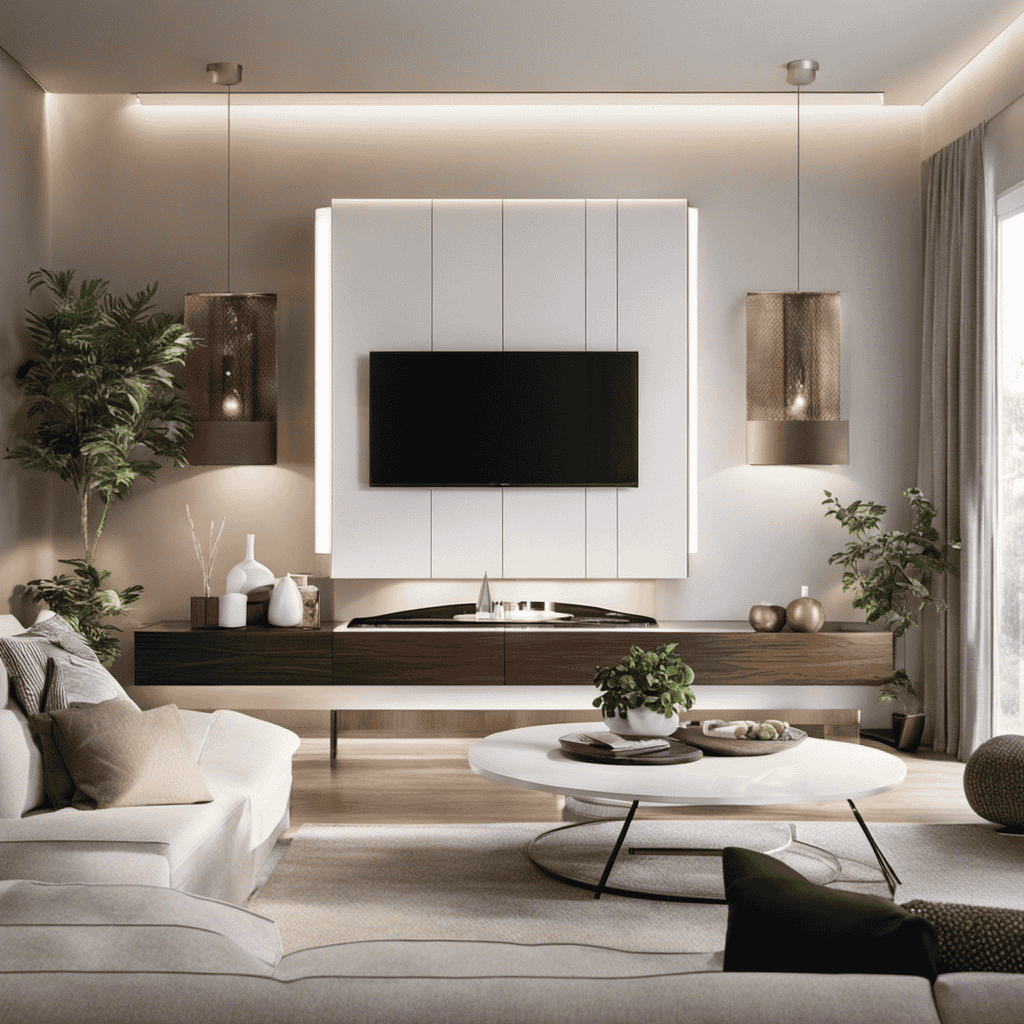
I have always been curious about whether running my air purifier nonstop every day would actually have an impact. After doing some research, I was surprised by the results. It appears that there are some convincing arguments for running your air purifier around the clock.
From improving indoor air quality to reducing the risk of respiratory issues, continuous air purification offers a range of health benefits. Plus, it can enhance sleep quality and even save you money in the long run.
Let’s dive deeper into the science behind it all.
Key Takeaways
- Improved indoor air quality
- Reduced risk of allergies and respiratory issues
- Enhanced sleep quality
- Boosted immune system function
Health Benefits of Running Your Air Purifier 24/7
Running your air purifier 24/7 can greatly improve the air quality in your home, reducing the risk of allergies and respiratory issues. Regular air purifier maintenance is essential to ensure that it functions optimally and continues to provide you with clean air.
By constantly circulating and filtering the air, an air purifier can remove harmful particles such as dust, pollen, pet dander, and mold spores. This is especially beneficial for those with allergies or asthma, as it helps to alleviate symptoms and promote better respiratory health.
Additionally, clean air is important for everyone’s overall well-being. Breathing in clean air can improve sleep quality, enhance cognitive function, and boost immune system function.
Improved Indoor Air Quality With Continuous Air Purification
Constantly clean air is essential for maintaining a healthy indoor environment. With continuous air purification, you can ensure that the air you breathe is free from pollutants and allergens.
This not only improves the quality of the air you breathe but also provides numerous health benefits. For example, it reduces the risk of respiratory issues and allergies.
Constantly Clean Air
You should keep your air purifier on all the time to ensure that the air in your home is always clean. Running your air purifier continuously offers several benefits, including improved indoor air quality and a healthier living environment. Here’s why you should consider running your air purifier 24/7:
-
Energy Consumption: Most modern air purifiers are designed to be energy-efficient. They consume minimal electricity, so you don’t have to worry about high energy bills.
-
Noise Level: Air purifiers are designed to operate quietly, allowing you to enjoy a peaceful environment while still benefiting from clean air.
-
Constantly Clean Air: By running your air purifier all the time, you can maintain a consistent level of air purification, ensuring that pollutants, allergens, and other harmful particles are constantly being removed.
With these factors in mind, it’s clear that running your air purifier continuously is a smart choice for maintaining cleaner and healthier indoor air. In addition to the benefits mentioned, continuous purification also offers various health benefits that we will explore in the next section.
Health Benefits of Continuous Purification
By keeping your air purifier on all the time, you’ll experience improved indoor air quality and enjoy the health benefits of continuous purification. Running your air purifier 24/7 can have a positive impact on your immune system and help reduce allergies.
Air purifiers work by removing airborne particles such as dust, pollen, pet dander, and mold spores from the air, which can trigger allergies and respiratory issues. By continuously purifying the air, your immune system is less likely to be overwhelmed by these allergens, resulting in improved overall health.
Additionally, air purifiers can also help reduce the spread of airborne viruses and bacteria, further supporting your immune system. So, if you want to improve your immune system and reduce allergies, keeping your air purifier on all the time is a wise decision.
Eliminating Allergens and Pollutants Around the Clock
Running my air purifier all day helps to eliminate allergens and pollutants from my home. Here are three ways it improves my overall well-being and reduces allergy symptoms:
-
Cleaner Air: With the air purifier constantly running, it filters out dust, pet dander, pollen, and other airborne particles that trigger allergies. This ensures that the air I breathe is clean and free from allergens.
-
Improved Sleep: By removing irritants from the air, the air purifier helps me sleep better at night. I wake up feeling refreshed and with fewer allergy symptoms, such as congestion or sneezing.
-
Reduced Asthma Triggers: Asthma sufferers like me benefit greatly from running an air purifier 24/7. It removes asthma triggers like mold spores and volatile organic compounds (VOCs), creating a healthier indoor environment.
The Importance of Consistent Air Filtration
Continuous air purification is essential for maintaining a healthy indoor environment. With consistent filtration, we can effectively remove pollutants and allergens from the air, reducing the risk of respiratory issues and other health problems.
Continuous Air Purification
There’s no need to worry about turning off your air purifier because it continuously cleans the air in your home. Here are three benefits of round the clock filtration:
-
Improved Indoor Air Quality: By running your air purifier 24/7, you ensure that the air in your home is constantly being purified. This helps remove harmful pollutants such as dust, pollen, pet dander, and mold spores, leading to cleaner and healthier air for you and your family.
-
Allergen Control: Continuous air purification helps reduce allergens in your home. It can effectively capture and eliminate common allergens, such as pollen and dust mites, providing relief for allergy sufferers.
-
Odor Elimination: Running your air purifier nonstop helps eliminate unpleasant odors, such as cooking smells, pet odors, and tobacco smoke. It can neutralize these odors by trapping and absorbing the particles that cause them.
By keeping your air purifier running constantly, you can enjoy the continuous benefits of clean and fresh air in your home, which can have a positive impact on your overall health and well-being.
In the next section, we will explore the specific health benefits of filtration.
Health Benefits of Filtration
By keeping your air purifier on all the time, you can experience the health benefits of cleaner air in your home. Air purifiers work by filtering out pollutants and contaminants from the air, ensuring that the air you breathe is cleaner and healthier. The filtration process traps particulate matter such as dust, pollen, pet dander, and even bacteria and viruses, reducing the risk of respiratory issues and allergies. Continuous operation of the air purifier ensures that the filtration system is constantly working to remove these harmful particles from the air.
This can lead to improved indoor air quality, reduced symptoms of allergies and asthma, and a healthier living environment overall. So, don’t hesitate to keep your air purifier running all the time to enjoy the full benefits of cleaner air in your home.
Reducing Indoor Air Pollution
To effectively reduce indoor air pollution, it’s important to regularly clean and maintain your air purifier. Here are three key reasons why this is crucial for improving respiratory health and reducing asthma triggers:
-
Efficient Filtration: A clean air purifier can effectively capture and remove airborne particles, such as dust, pet dander, and pollen, which are common triggers for respiratory issues and asthma attacks.
-
Preventing Recirculation: Regular maintenance ensures that the filters in your air purifier are functioning optimally. This prevents the recirculation of pollutants back into the air, keeping the indoor environment cleaner and healthier.
-
Promoting Better Air Quality: By regularly cleaning and maintaining your air purifier, you can enhance its overall performance, allowing it to efficiently clean the air and maintain a higher level of indoor air quality. This can significantly improve respiratory health and reduce asthma triggers for you and your family.
Reducing the Risk of Respiratory Issues by Running Your Air Purifier 24/7
Running your air purifier 24/7 can help you reduce the risk of respiratory issues. Indoor air pollution contains various harmful particles such as dust, pollen, pet dander, and volatile organic compounds (VOCs) that can trigger allergies and respiratory conditions like asthma. By continuously purifying the air, an air purifier can effectively remove these pollutants, providing cleaner and healthier air to breathe. This can lead to improved cognitive function and reduced asthma symptoms.
The constant filtration of the air helps to remove allergens and irritants, promoting better respiratory health. By reducing the risk of respiratory issues, running your air purifier round-the-clock can greatly benefit your overall well-being.
Additionally, enhancing sleep quality with round-the-clock air purification can further improve your health and well-being.
Enhancing Sleep Quality With Round-The-Clock Air Purification
Enhancing sleep quality can be achieved by using an air purifier that operates 24/7. Here are three ways in which running an air purifier round-the-clock can contribute to better sleep and improved well-being:
-
Reduced allergens: An air purifier filters out common allergens like pollen, dust mites, and pet dander, ensuring cleaner air in your bedroom. This can help alleviate allergy symptoms, such as sneezing, congestion, and itchy eyes, which can disrupt sleep.
-
Elimination of odors: Air purifiers with activated carbon filters can effectively remove unpleasant odors from the air, such as cooking smells or cigarette smoke. By eliminating these odors, you can create a more pleasant sleeping environment, promoting relaxation and better sleep.
-
Improved air quality: Air purifiers remove pollutants such as volatile organic compounds (VOCs) and airborne particles, creating cleaner and fresher air to breathe. This can lead to a healthier sleep environment, reducing the risk of respiratory issues and promoting overall well-being.
Energy Efficiency and Cost Savings With 24/7 Air Purifier Usage
By operating an air purifier round-the-clock, you can save on energy and reduce costs. Running an air purifier continuously may seem counterintuitive when it comes to energy savings, but it can actually be more efficient in the long run. Modern air purifiers are designed to be energy-efficient, and running them continuously helps maintain a consistently clean and healthy indoor environment. The energy consumption of an air purifier depends on factors such as the size of the room and the air quality, but most models have low power consumption. Additionally, running an air purifier 24/7 can help reduce the environmental impact by improving indoor air quality and reducing the need for other energy-consuming devices like fans or dehumidifiers.
Here is a table showcasing the potential energy savings and environmental impact of running an air purifier round-the-clock:
| Energy Savings | Environmental Impact |
|---|---|
| Reduced need for other devices | Improved indoor air quality |
| Lower power consumption | Reduced use of fans and dehumidifiers |
| Consistent clean air | Decreased pollutants in the air |
Overall, operating an air purifier continuously can lead to energy savings and a positive environmental impact.
Conclusion
In conclusion, running your air purifier 24/7 is like having a guardian angel for your indoor air quality. It tirelessly fights off allergens and pollutants, giving you a breath of fresh air day and night.
With consistent air filtration, the risk of respiratory issues is greatly reduced, allowing you to breathe easy. Not only does it improve your health, but it enhances your sleep quality as well.
And the best part? It’s energy efficient and saves you money. So why wait? Let your air purifier be your constant protector, purifying the air around you non-stop.
At Aero Guardians, where every piece of information aims to make the world a breath fresher, Samuela’s role as an author has been nothing short of transformative. With a penchant for weaving stories around the science of air purification, Samuela has enriched the platform with content that is both enlightening and captivating.
FAQs - Advanced Queries
Why Is the Air Purifier so Noisy
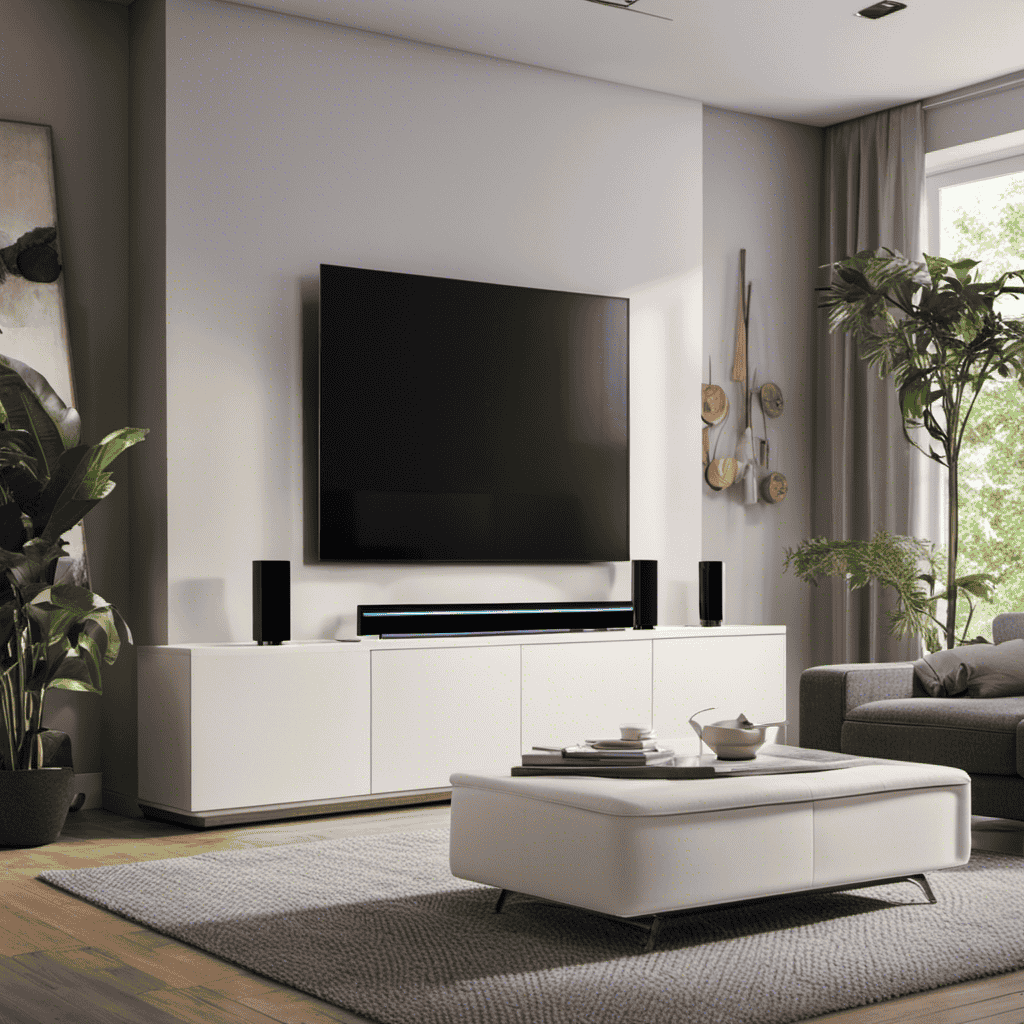
As someone who frequently uses air purifiers, I am constantly bothered by the loud noise they generate. It feels like a small tornado has made its home in my living room.
This article delves into the various causes behind the seemingly relentless racket of air purifiers. By examining factors such as fan noise, motor malfunctions, filter maintenance, and airflow, we aim to shed light on why these devices can be as disruptive as they are beneficial.
Additionally, we will explore practical tips for minimizing the noise and maximizing the peace in our homes.
Key Takeaways
- Dirty or clogged filters restrict airflow and cause the fan to work harder, resulting in more noise.
- Motor speed directly affects fan noise, with higher speeds producing louder noise levels.
- Motor malfunctions such as worn-out bearings or damaged fan blades can lead to increased noise levels.
- Regular filter cleaning and replacement, as well as proper maintenance of the motor, can help reduce noise in air purifiers.
Common Causes of Noisy Air Purifiers
One of the most common causes of noisy air purifiers is a dirty or clogged filter. When the filter becomes dirty, it restricts the flow of air through the purifier, causing the fan to work harder and generate more noise.
To prevent this issue, it’s crucial to regularly clean or replace the filter according to the manufacturer’s instructions.
Another factor that can contribute to noise is the fan speed. Higher fan speeds generally produce more noise due to the increased airflow. Understanding the fan speed settings and adjusting them accordingly can help minimize noise levels while still maintaining optimal air purification.
Additionally, noise reduction techniques such as sound insulation materials or placing the purifier on a stable surface can effectively reduce unwanted noise.
Understanding Fan Noise in Air Purifiers
To better understand the fan noise in air purifiers, it’s helpful to consider factors such as motor speed and blade design. The motor noise is directly related to the fan speed, with higher speeds generally resulting in louder noise levels. Additionally, the design of the fan blades can impact the noise produced. Blades with a more streamlined shape and optimized pitch can reduce turbulence and minimize noise. Other factors that contribute to fan noise include the quality of the motor bearings, the presence of vibration dampening mechanisms, and the overall construction of the air purifier housing.
By taking all these factors into account, manufacturers can create air purifiers that deliver effective purification while minimizing fan noise.
Transitioning into the subsequent section about ‘motor malfunctions and noise levels’, it’s important to note that even with proper design and maintenance, motors can sometimes malfunction, leading to increased noise levels.
Motor Malfunctions and Noise Levels
When motors malfunction, the noise levels can become noticeably louder. Motor malfunction effects vary depending on the specific issue, but common problems include worn-out bearings, loose components, or damaged fan blades. These issues can lead to excessive vibrations and increased noise levels.
To minimize the noise caused by motor malfunctions, several noise reduction methods can be implemented. One approach is to use vibration isolators or dampeners to absorb and reduce the vibrations produced by the malfunctioning motor.
Additionally, regular maintenance and inspection of the motor can help identify and address any potential issues before they escalate and cause increased noise levels.
Lastly, replacing worn-out or damaged components, such as fan blades or bearings, can also help restore the motor’s functionality and reduce noise.
How Filter Maintenance Affects Noise Levels
Dirty filters can significantly increase the noise levels of an air purifier. When the filter becomes clogged with dust and debris, it obstructs the airflow, forcing the motor to work harder and produce more noise.
Regular filter cleaning is crucial to maintain optimal performance and reduce noise levels in the long run. Additionally, replacing the filter when necessary can further minimize noise by ensuring proper air circulation and preventing the motor from overworking.
Dirty Filters Increase Noise
You can reduce the noise of your air purifier by cleaning or replacing the filters regularly. Dirty filters can cause the fan speed to increase, leading to louder operation.
Here are some noise reduction techniques to consider:
- Clean or replace filters every 3-6 months to maintain optimal performance.
- Use high-quality filters that are specifically designed for noise reduction.
- Place the air purifier on a stable surface to minimize vibrations and rattling sounds.
- Keep the air purifier away from walls or other objects that may obstruct airflow.
- Consider using a lower fan speed setting, as higher speeds tend to generate more noise.
Regular Filter Cleaning
To maintain optimal performance, it’s important to regularly clean or replace your air purifier filters. This is especially crucial for reducing noise levels and ensuring a quieter operation.
When the filters become dirty or clogged, the fan has to work harder to draw in air, resulting in increased noise. By regularly cleaning the filters, you can prevent this buildup and maintain efficient airflow.
Start by turning off the purifier and removing the filters. Use a vacuum cleaner or a soft brush to gently remove dust and debris from the filters and the fan blades. Make sure to follow the manufacturer’s instructions for proper cleaning techniques.
Regular filter cleaning not only improves air quality but also reduces noise, creating a more peaceful environment in your home.
Filter Replacement Reduces Noise
Replacing your filters regularly can greatly reduce the noise levels emitted by your air purifier. When filters become clogged with dust and debris, the air purifier has to work harder to pull air through, resulting in increased noise. By replacing filters on a regular basis, you can maintain optimal airflow and minimize noise.
Here are some benefits of filter replacement for noise reduction:
-
Improved air circulation: Clean filters allow for better airflow, reducing strain on the air purifier and decreasing noise.
-
Enhanced efficiency: New filters ensure that the air purifier is operating at maximum efficiency, reducing noise caused by inefficiencies.
-
Reduced motor wear and tear: With clean filters, the motor doesn’t have to work as hard, leading to quieter operation.
-
Longer lifespan: Regular filter replacement prolongs the lifespan of your air purifier, reducing the likelihood of noise-related issues.
-
Enhanced air quality: Fresh filters remove more contaminants, allowing the air purifier to operate more quietly while maintaining clean air.
The Impact of Airflow and Noise
When the air purifier is operating at high airflow levels, it can become noisy and potentially disrupt your daily activities. This is because the increased airflow generates more noise as it moves through the purifier’s components. To address this issue, manufacturers focus on improving airflow efficiency and implementing noise reduction techniques. By optimizing the design and placement of the internal components, they can reduce turbulence and minimize vibrations that contribute to noise. Additionally, advanced sound insulation materials are used to absorb and dampen the noise generated during operation. These efforts result in quieter air purifiers that provide effective purification without causing excessive noise pollution. In the table below, I have summarized some common noise reduction techniques used in air purifiers:
| Noise Reduction Techniques |
|---|
| Design optimization |
| Component placement |
| Sound insulation materials |
| Vibration damping |
| Noise-absorbing filters |
Tips for Reducing Noise From Your Air Purifier
When it comes to air purifiers, one of the biggest concerns for users is the noise level. In this discussion, I will explore various noise-reducing techniques that can be implemented to minimize the disturbance caused by air purifiers.
Additionally, I will delve into the concept of silent air purifiers and their effectiveness in providing a quiet and peaceful environment.
Noise-Reducing Techniques
To reduce the noise of your air purifier, try adjusting the fan speed or placing it on a soft surface. These simple steps can significantly decrease the noise produced by your device.
However, if you’re looking for more advanced solutions, there are noise reducing technologies and soundproofing techniques available. Consider the following options:
- Noise reducing technology: Some air purifiers come equipped with advanced noise reduction features, such as vibration isolation pads or sound-absorbing materials.
- Soundproofing techniques: You can soundproof the area around your air purifier by using soundproof curtains, acoustic panels, or even a white noise machine to mask the noise.
By implementing these techniques, you can create a quieter environment while still enjoying the benefits of clean air.
Now, let’s explore the next section about silent air purifiers and how they can further minimize noise.
Silent Air Purifiers
Silent air purifiers offer a noise-free solution for those seeking a quieter environment. These innovative devices utilize advanced noise-reducing technologies to ensure a peaceful atmosphere without compromising on air quality. By employing cutting-edge engineering and design, silent air purifiers effectively remove airborne pollutants while operating silently in the background.
One of the key features of silent air purifiers is their incorporation of noise reducing technologies. These technologies include sound-dampening materials, advanced fan designs, and vibration isolation systems. By minimizing the noise generated by the purifier’s components, these devices create a more serene environment for users.
To illustrate the effectiveness of silent air purifiers, let’s take a look at the following table showcasing some popular models and their noise levels:
| Model | Noise Level (dB) | Coverage Area (sq. ft.) |
|---|---|---|
| A | 25 | 300 |
| B | 30 | 500 |
| C | 35 | 800 |
| D | 40 | 1000 |
As you can see, these silent air purifiers operate at low noise levels, allowing you to enjoy cleaner air without the distractions of loud machinery. Whether it’s for your bedroom, office, or any other space, silent air purifiers provide a peaceful environment while effectively improving indoor air quality.
Noise Level Comparison
These innovative devices offer a quieter environment by incorporating noise-reducing technologies. When comparing noise levels of different air purifiers, it is important to consider the following factors:
- Sound insulation: Some air purifiers are designed with special materials that help absorb and reduce noise.
- Fan speed control: A silent air purifier brand may offer multiple fan speed settings, allowing you to adjust the noise level according to your preference.
- Filter design: Certain air purifiers use advanced filter designs that optimize airflow while minimizing noise.
- Vibration reduction: Manufacturers may incorporate vibration-dampening technologies to reduce noise caused by motor vibrations.
- Smart features: Some air purifiers come with smart sensors that detect the air quality and adjust the fan speed accordingly, resulting in a quieter operation.
Frequently Asked Questions
Can Noisy Air Purifiers Affect My Sleep Quality?
Noisy air purifiers can negatively impact sleep quality. Excessive noise can disrupt sleep patterns, leading to poor sleep and overall health issues. To reduce noise, consider placing the purifier in a separate room or using a quieter model.
Can Air Purifiers Make My Allergies Worse Due to the Noise They Produce?
Yes, air purifiers can potentially cause hearing damage due to their high noise levels. However, there are ways to reduce the noise without compromising effectiveness, such as using noise-cancelling technology or placing the purifier in a soundproofed area.
Are There Any Specific Brands or Models of Air Purifiers That Are Known for Being Quieter?
Quiet air purifiers can be found in various brands and models. Noise reduction techniques, such as sound insulation and fan design, are employed to minimize noise. These advancements ensure a peaceful environment while maintaining effective air purification.
Can I Use My Air Purifier in a Bedroom or Office Without Disturbing Others With the Noise?
I can use my air purifier in a bedroom or office without disturbing others with the noise. By selecting a model with lower air purifier noise levels and implementing tips for reducing noise, such as placing it on a stable surface and cleaning the filters regularly.
How Can I Tell if the Noise Coming From My Air Purifier Is Normal or if There Is a Malfunction?
To determine if the noise from my air purifier is normal or a malfunction, I can follow these troubleshooting tips: check for loose parts, clean or replace filters, and ensure proper placement and ventilation.
Conclusion
In conclusion, noisy air purifiers can be attributed to various factors. These factors include fan noise, motor malfunctions, and filter maintenance. The airflow and noise levels are directly linked, impacting the overall noise produced by the device.
To reduce noise, consider cleaning or replacing filters regularly. Additionally, ensure proper maintenance of the motor. Just like a well-tuned engine purrs smoothly, a well-maintained air purifier operates silently. This allows you to enjoy clean and fresh air without any disruptions.
So, take care of your air purifier, and it will take care of you.
In the dynamic world of air purifiers and clean air advocacy, Aire stands out as a beacon of knowledge and passion. As the Editor in Chief of Aero Guardians, Aire has been instrumental in shaping the platform’s voice and direction, ensuring that every piece of content resonates with clarity, authority, and authenticity.
-

 Air Purifier Guides8 months ago
Air Purifier Guides8 months agoHow to Reset Filter on Miko Air Purifier
-
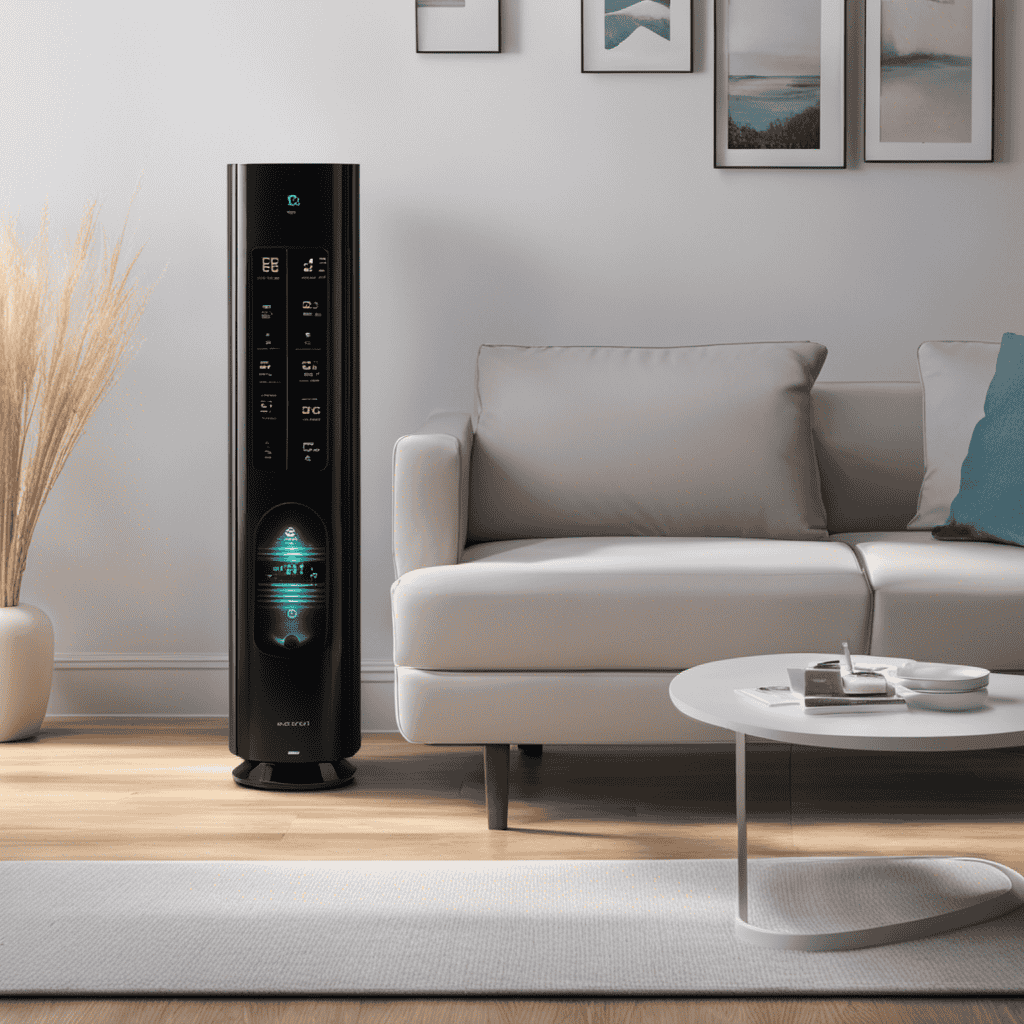
 FAQs - Advanced Queries5 months ago
FAQs - Advanced Queries5 months agoWhat Do the Numbers on My Air Purifier Mean
-
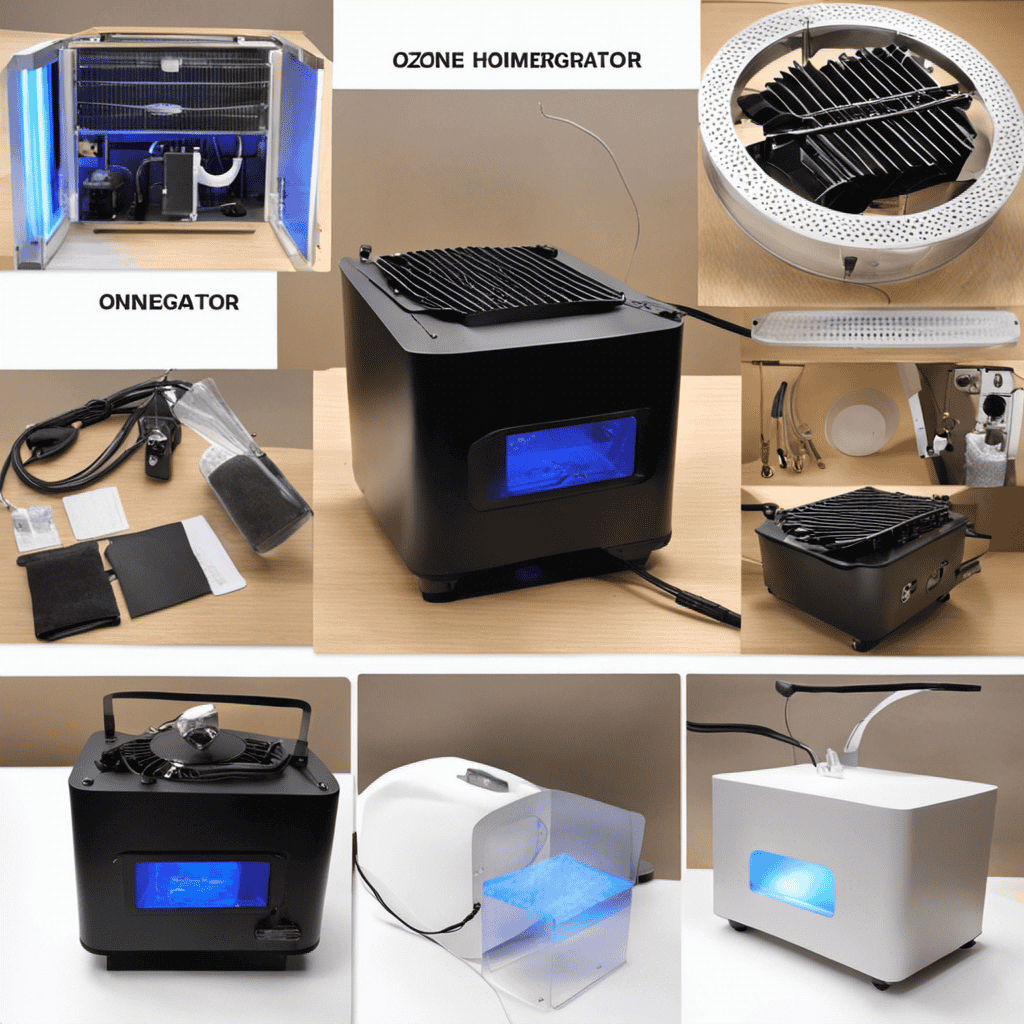
 Air Purifier Guides6 months ago
Air Purifier Guides6 months agoHow to Make a Homemade Ozone Generator (Air Purifier
-
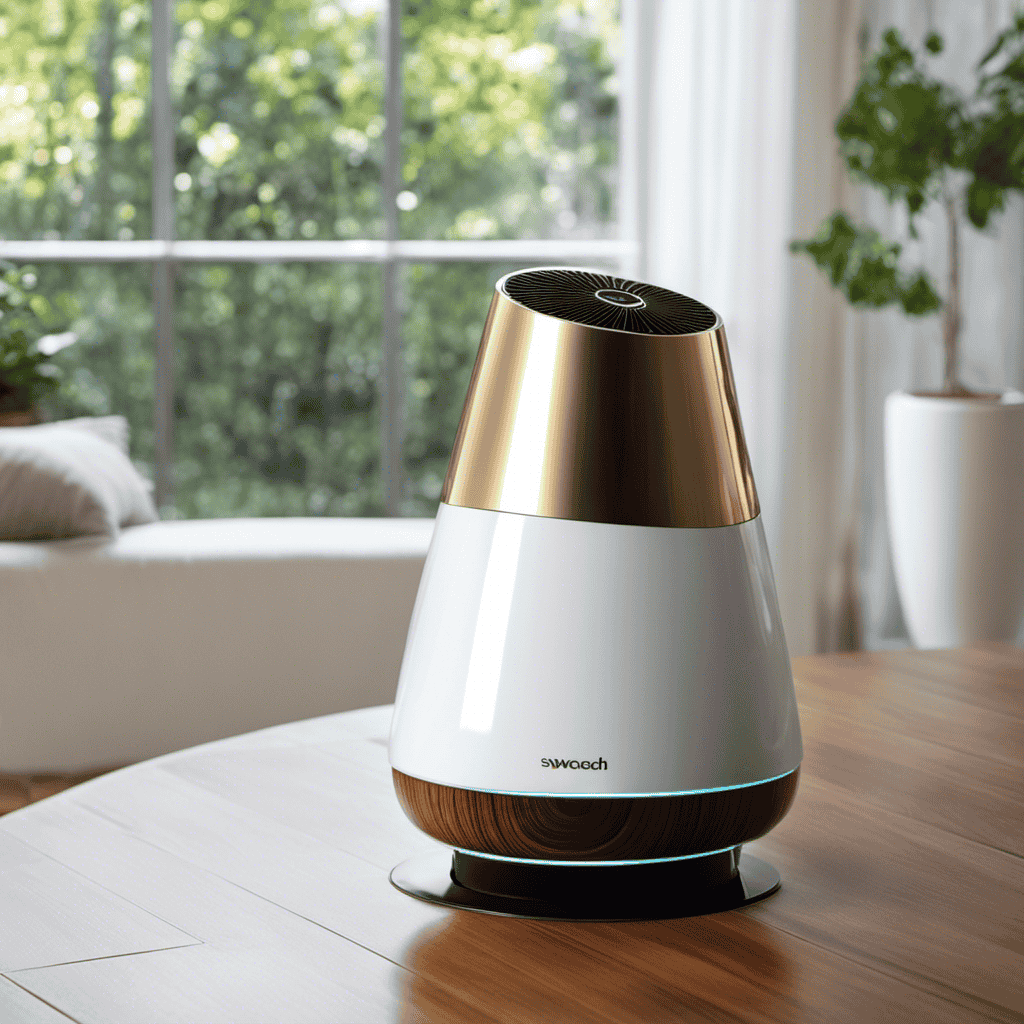
 Types of Air Purifiers9 months ago
Types of Air Purifiers9 months agoWhat Is an Air Purifier
-
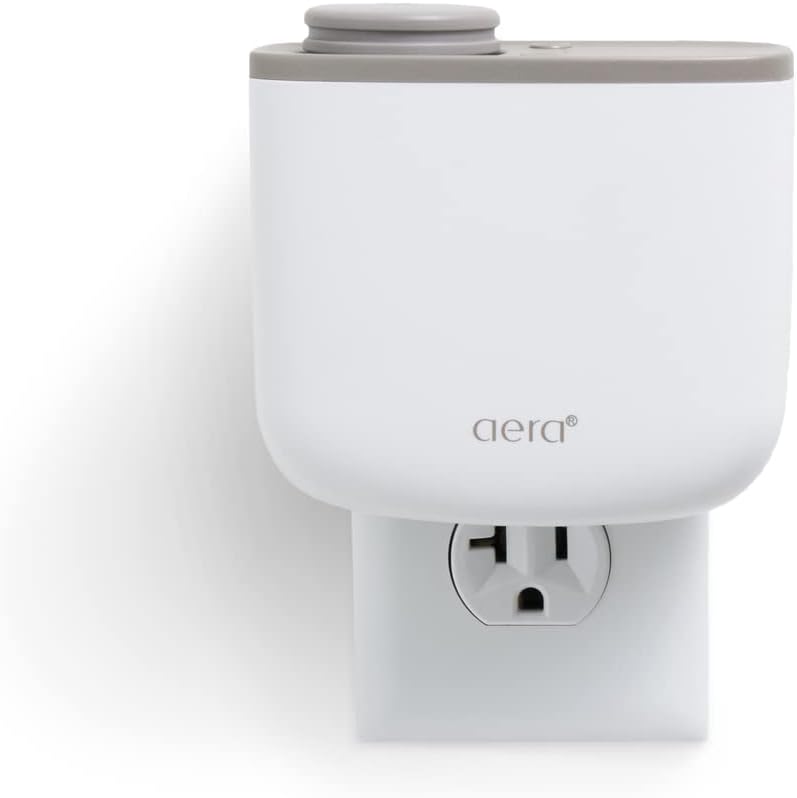
 Vetted7 months ago
Vetted7 months agoAera Mini Review: Smart Home Fragrance Diffuser With Hypoallergenic Scent Technology (2023)
-

 Maintenance and Tips10 months ago
Maintenance and Tips10 months agoHow to Reset Filter Light on Winix Plasmawave Air Purifier
-
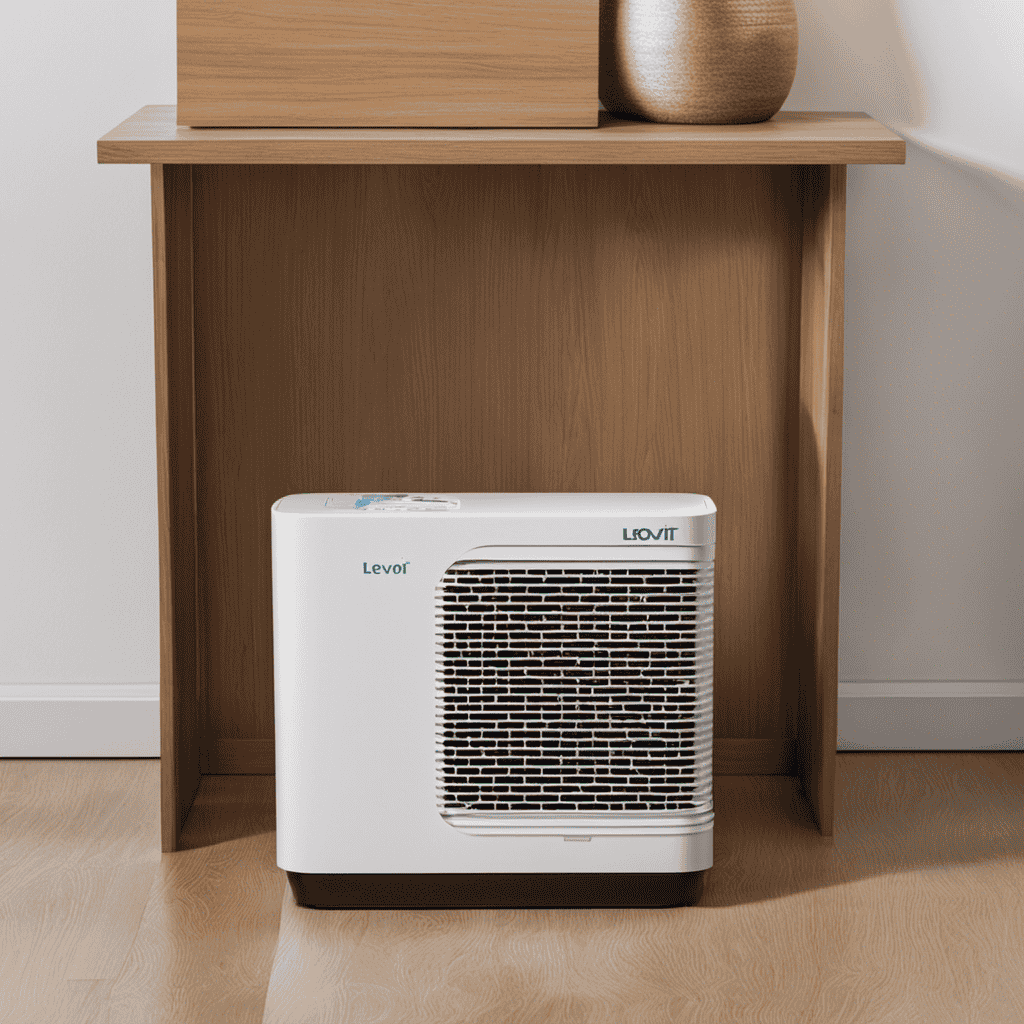
 Air Purifier Guides3 days ago
Air Purifier Guides3 days agoHow to Dispose of Air Purifier Filter Levoit
-
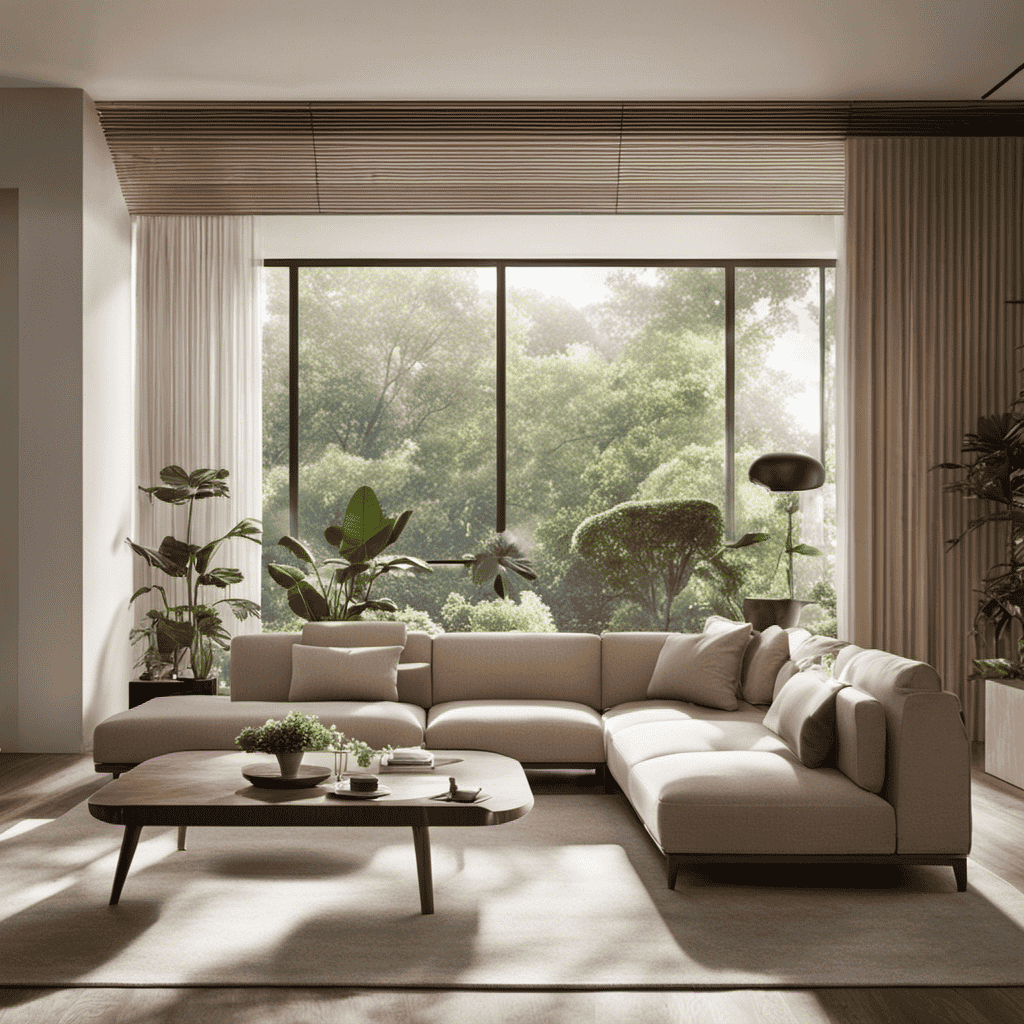
 FAQs - Advanced Queries3 weeks ago
FAQs - Advanced Queries3 weeks agoWhen to Use Ionizer on Coway Air Purifier






